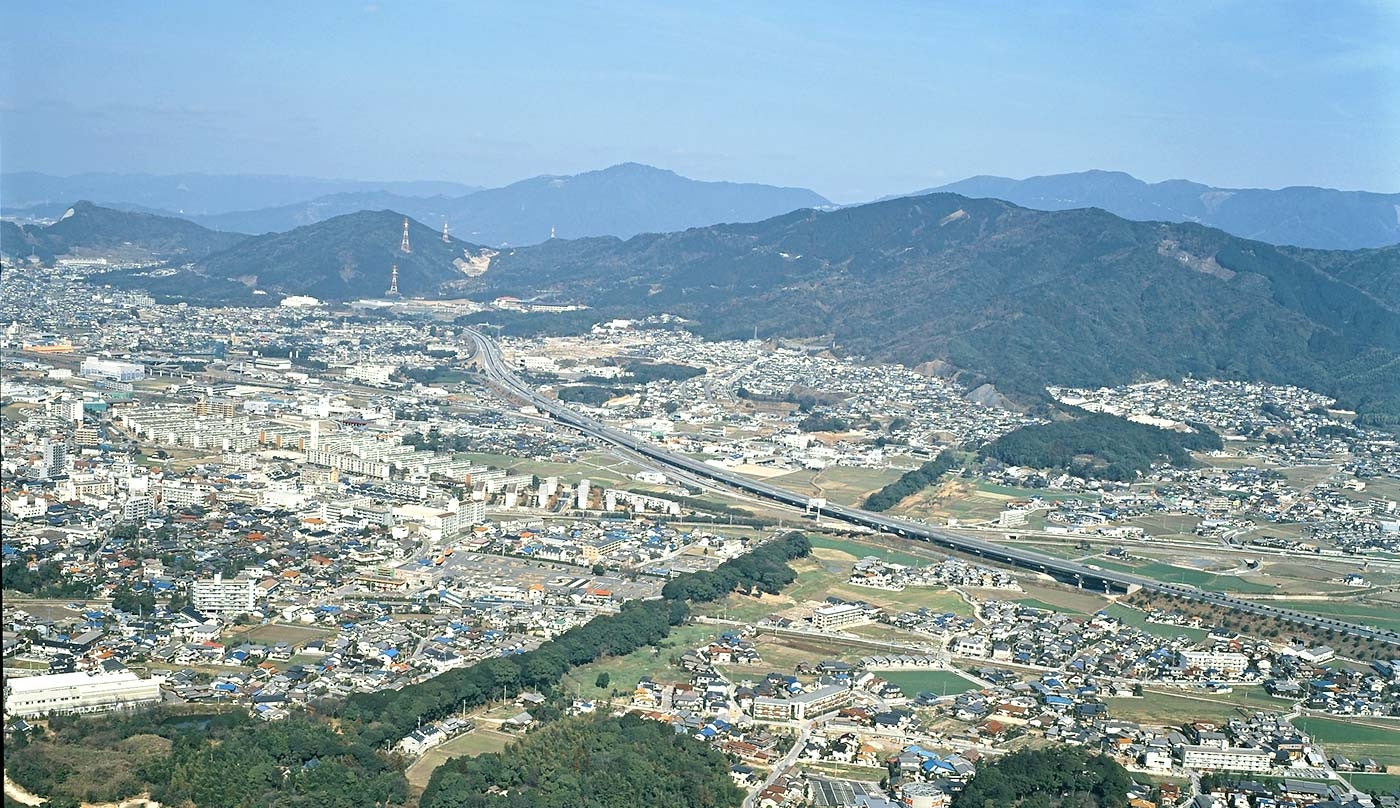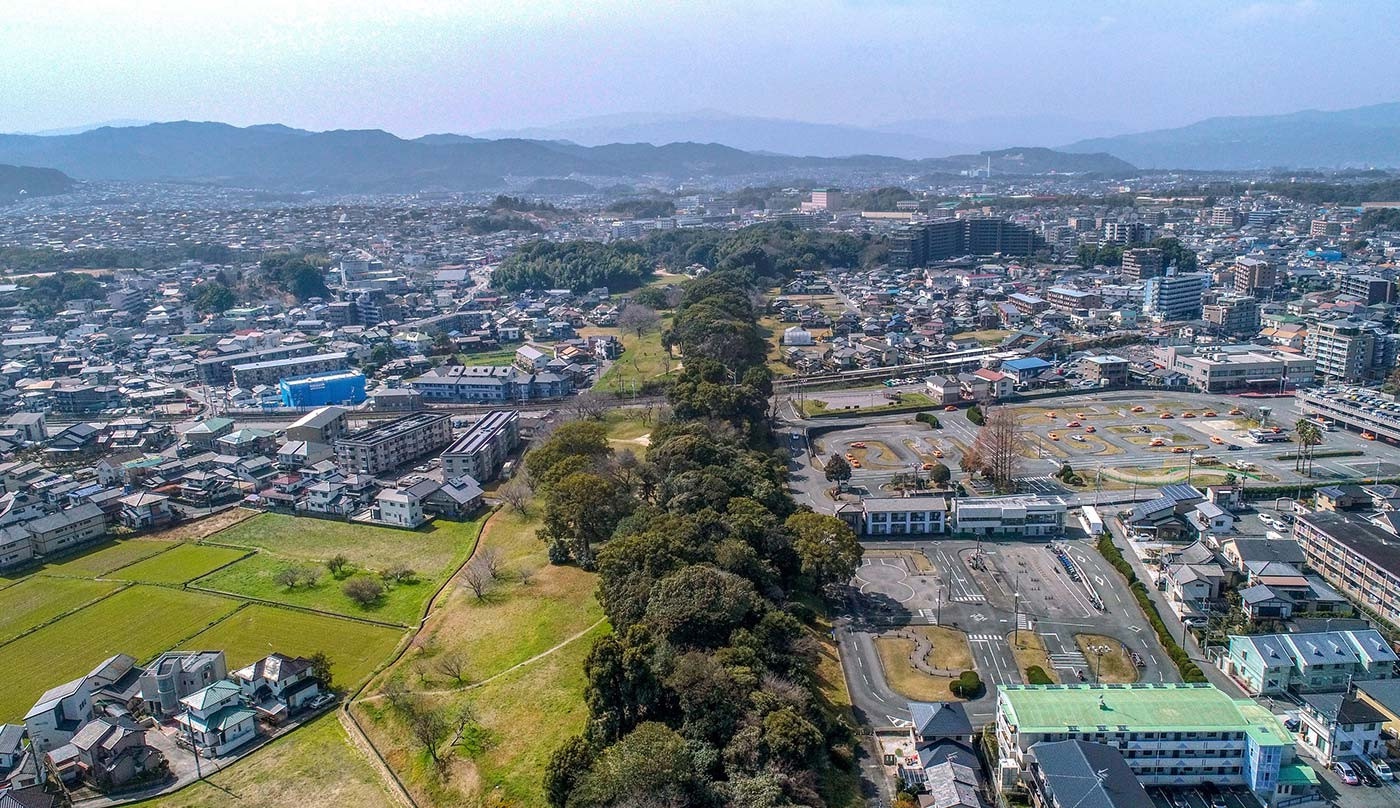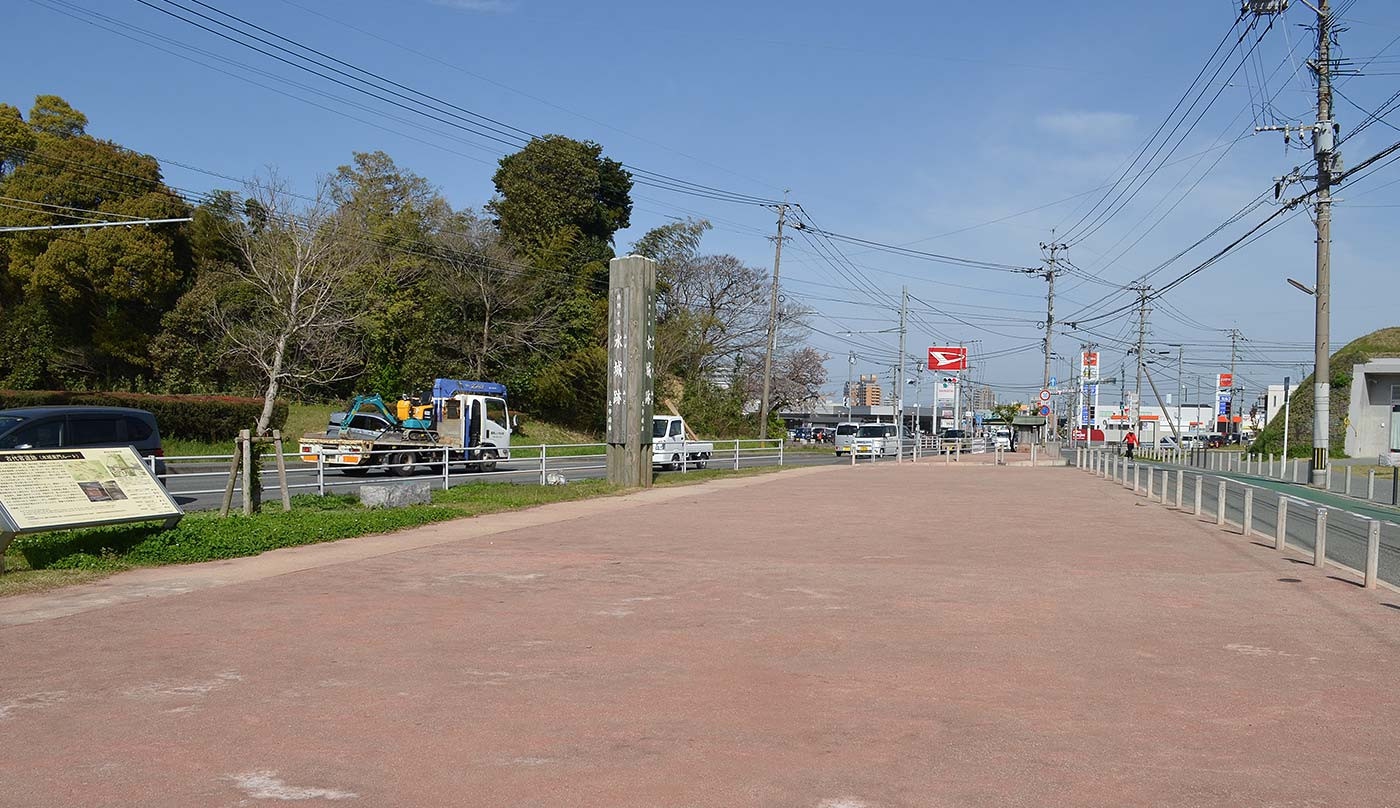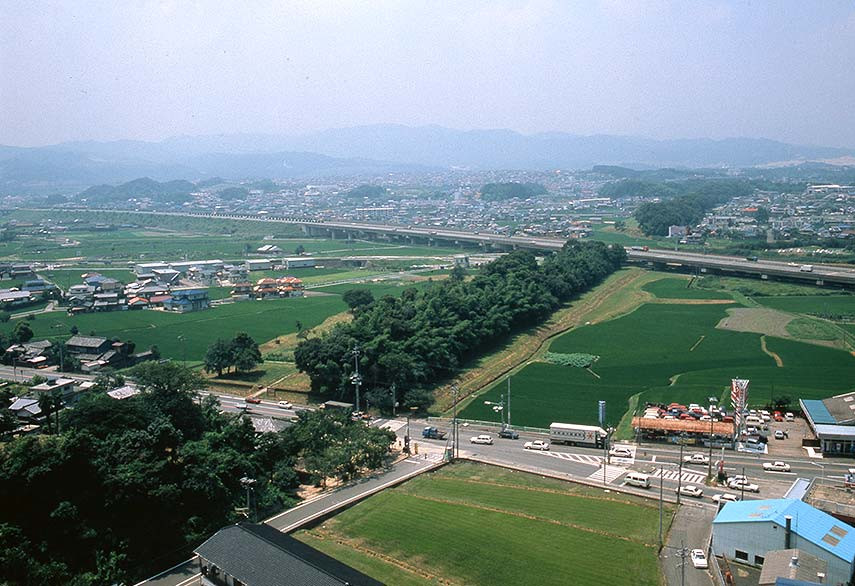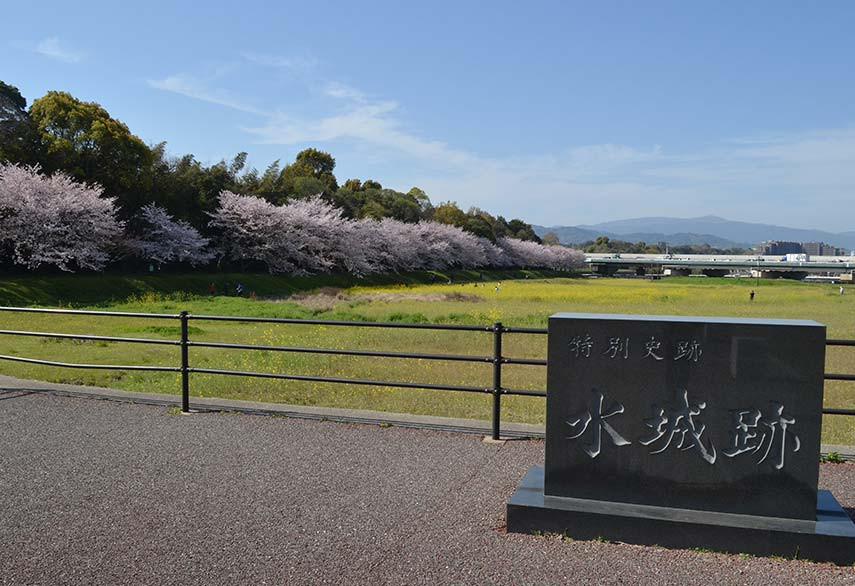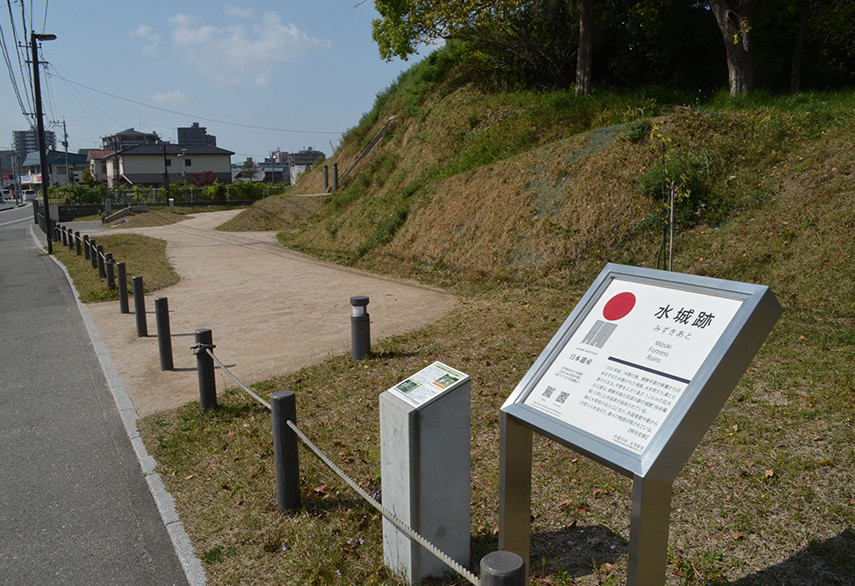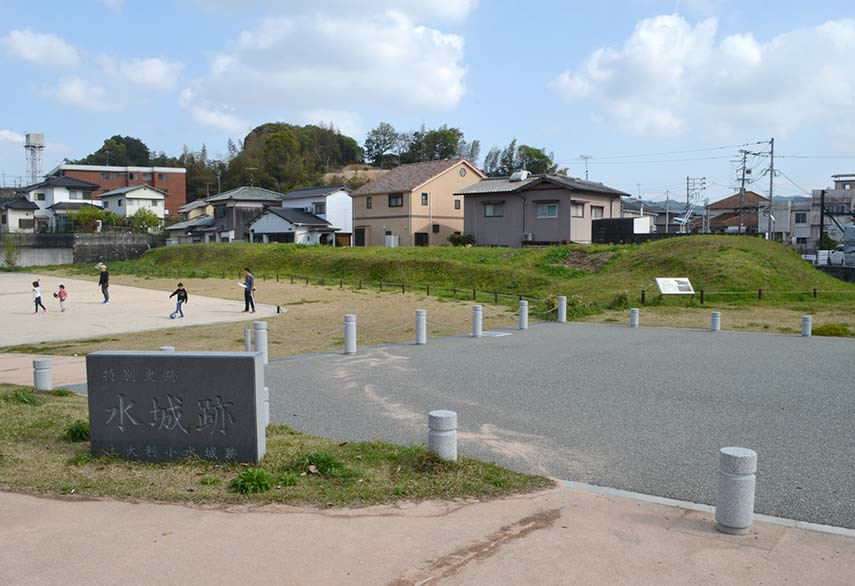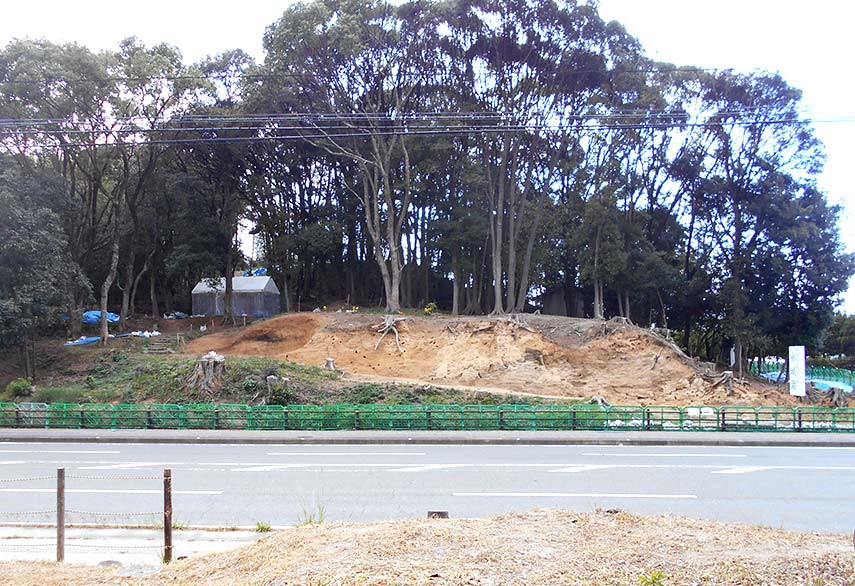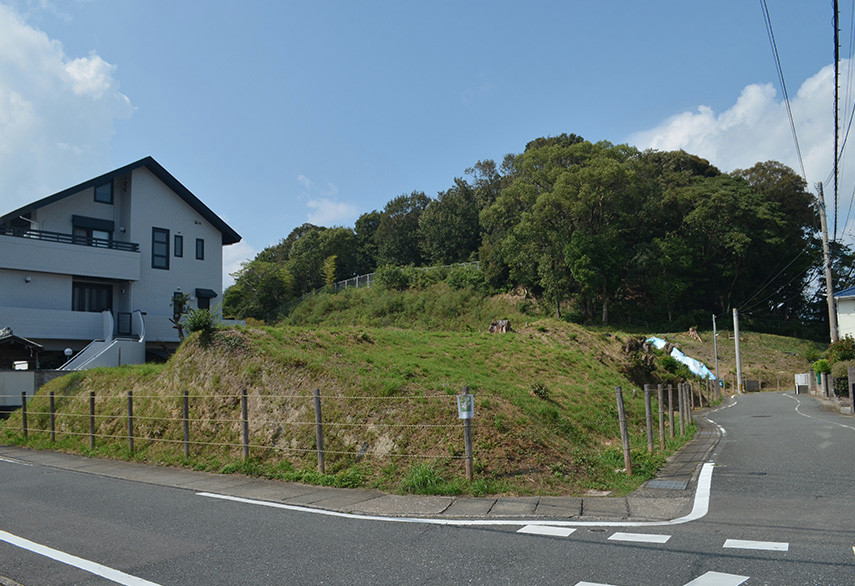
Mizuki Fortress Ruins
| Location | City of Kasuga・City of Onojo・City of Dazaifu |
|---|---|
| Designation | National Special Historical Site |
| Emblem | 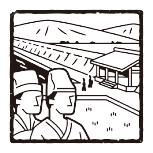 |
This fortress was built to defend Japan after losing the war in support of the Baekje kingdom against Tang and Silla dynasties 1350 years ago.It consists of moats filled with water and mounds. Even now, a huge mound with a length of 1.2 km can be seen. It was built in the style of the Rajo city wall in Buyeo, capital of Baekje. Later, it became the entrance to Dazaifu, which welcomed many foreign delegations and government officials from the national capital. This was the setting for a number of stories from history.
An Enormous Dyke Blocking the Plains
The Nihon Shoki writes, “A large dyke will be built in Fukuoka to store water. It will be called Mizuki.” Characterizing the Mizuki Fortress ruins are earthworks roughly 1.2 kilometers long, 10 meters high, and 80 meters wide, made using engineering technology that was state-of-the-art for the time, such as rammed earth and fascines. In front of the earthen mound is an outer moat 60 meters wide and 4 meters deep. It is believed that wooden troughs (wooden water pipes) were buried within the earthworks, drawing water from the outer moat into storage. Fortress gates were built to the east and west of these earthworks, and the several buildings found inside the inner (southern) side of the east and west gate are assumed to be barracks and administrative offices monitoring traffic through the gates. The east and west gates were constructed with magnificent tiled roofs in the Nara Period, with the west gate used to welcome foreign envoys and the east gate used to welcome visitors from the capital. Meanwhile, this was also a place to bid farewell to travelers, and the east gate had a stage where farewell songs were performed for Otomo no Tabito and a woman named Kojima when returning to the capital. The earthworks were later repaired and the gates rebuilt to protect Dazaifu, but by the end of the Heian Period, their roles had been fulfilled.
The Advanced Technology Found in Shomizuki Fortress
The ruins of Kamiori Mizuki, Odoi Mizuki, and Tenjinyama Mizuki have been found on the west side of Mizuki, described as an “enormous dyke” in the Nihon Shoki, as though blocking the valley. Because these are small compared to the “enormous dyke”, they are called Shomizuki (“Small Water Fortresses”). While all are built with sturdy earthworks formed from many layers of earth, the method used to stack the earth differs slightly depending on location, meaning it appears that the construction method changed flexibly according to the terrain. An excavation of Odoi Mizuki Fortress found a wooden trough (wooden water pipe) that passed water under the earthworks, which used a civil engineering technique in which crossties were arranged to prevent the troughs from sinking as well as construction technology to connect boards together. These “small” Mizuki Fortresses built as a series of defenses along with Mizuki Fortress blocking the plains serve as civil engineering heritage that speaks to the high level of technology at that time.
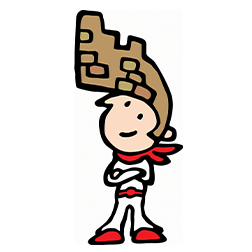
Onojo City Characters/Ono Joe
At “Mizuki Yume Hiroba Park” on the western edge of Mizuki Fortress is a gazebo with comprehensive explanation boards and restrooms as well as a large parking lot, making it the launchpad for a walk around the ruins of Mizuki Fortress. From Mizuki Yume Hiroba take a pleasant stroll east through Nakanoshima Hiroba, where you’ll arrive at the ruins of the west gate of Mizuki Fortress. The ruins of the west gate, where foreign envoys and merchants once passed, retains its past atmosphere and is a highly recommended destination.

Dazaifu City Characters/Tabito the Traveler, Otomo no Tabitto, Princess Reiwa
First, head to the ruins of the East Gate of Mizuki Fortress. The commanding view here lets you see the earthworks of Mizuki Fortress on a magnificent scale. The moat ruins are covered with rape blossoms in spring and cosmos in autumn, attracting many visitors each year. Nearby is the Mizuki Museum, which explains the fortress, as well as Kinukake Shrine, which tells the legend of how Sugawara no Michizane left the capital for Dazaifu. *Dazaifu City Wi-Fi, a public Wi-Fi network, is available in that area around Mizuki Museum.
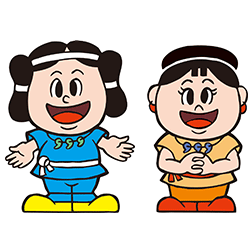
Kasuga City Characters/Kasuga-kun and Asuka-chan
The ruins of Odoi Mizuki Fortress and Tenjinyama Mizuki Fortress are 400 meters apart, meaning you can see the other from their respective hills. The high ground where the Odoi Mizuki Fortress ruins are offer views of the mountains of Itoshima Peninsula when the weather is clear, suggesting that this was an important location for defense. In the natural hills that Tenjinyama Mizuki Fortress is attached to are tumuli both key-hole shaped and round, and in the city of Kasuga, you can observe rare species of plants such as the noble orchid, Gentiana zollingeri, and Sarcanda glabra as well as animals such as rhinoceros beetles and stag beetles. There is also a “Four Seasons Path” (promenade) between Odoi Mizuki Fortress and Tenjinyama Mizuki Fortress ruins where you can enjoy a stroll in every season.
Access Information
Address
Mizuki Fortress East Gate Ruins:818-0132 2-17-11 Kokubu, Dazaifu, Fukuoka
Mizuki Fortress West Gate Ruins:816-0952 4-12 Shimoori, Onojo, Fukuoka
Tenjinyama Mizuki Fortress Ruins:816-0855 1-128 Tenjinyama, Kasuga, Fukuoka
Odoi Mizuki Fortress Ruins:816-0851 8-12 Noborimachi, Kasuga, Fukuoka
Kamiori Mizuki Fortress Ruins:816-8953 1-4 Asahigaoka, Onojo, Fukuoka
By Train
Mizuki Fortress East Gate Ruins:About 20 min on foot from Nishitetsu Tofuromae Station
Mizuki Fortress West Gate Ruins:About 5 min on foot from JR Mizuki Station
Tenjinyama Mizuki Fortress Ruins:About 20 min on foot from JR Hakata-Minami Station
Odoi Mizuki Fortress Ruins:About 25 min on foot from JR Hakata-Minami Station
Kamiori Mizuki Fortress Ruins:About 20 min on foot from JR Mizuki Station
By Car
Mizuki Fortress East Gate Ruins:About 2 min from the Dazaifu IC on the Kyushu Expressway
MizukiFortress West Gate Ruins:About 7 min from the Dazaifu IC on the Kyushu Expressway
Tenjinyama Mizuki Fortress Ruins:About 18 min from the Dazaifu IC on the Kyushu Expressway
Odoi Mizuki Fortress Ruins:About 15 min from the Dazaifu IC on the Kyushu Expressway
Kamiori Mizuki Fortress Ruins:About 7 min from the Dazaifu IC on the Kyushu Expressway

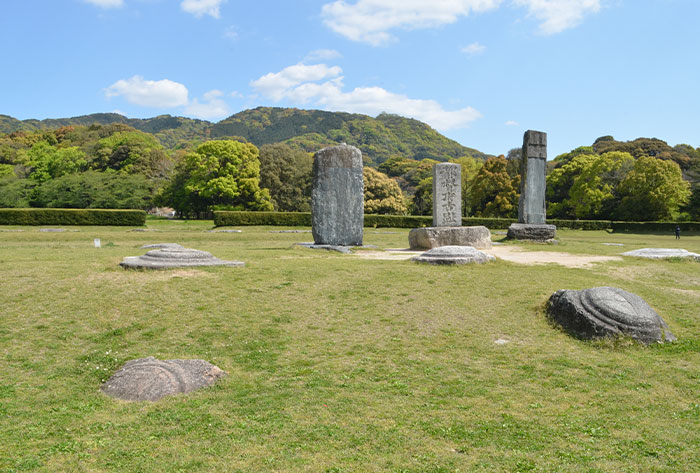
About the Western Capital
The “Western Capital”, created in Tsukushi 1300 years ago. Cultural assets speaking to the magnificence of this city of international exchange that flourished in East Asia are scattered across the cities of Chikushino, Kasuga, Onojo, Dazaifu, Nakagawa, and Umi in Fukuoka Prefecture as well as the town of Kiyama in Saga Prefecture.

